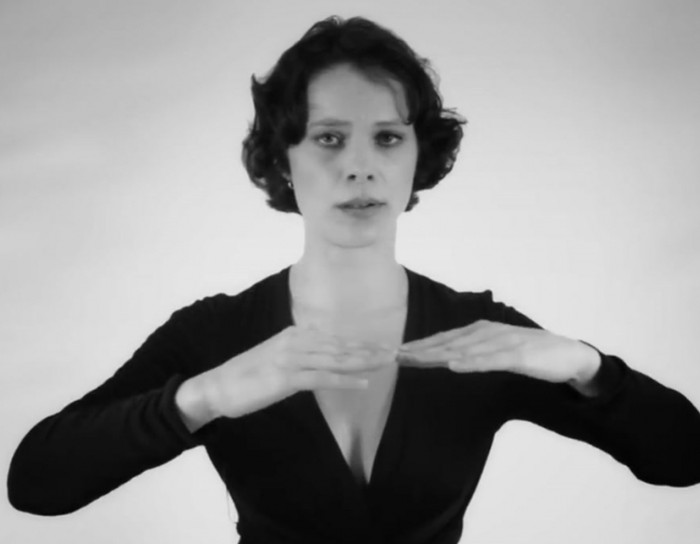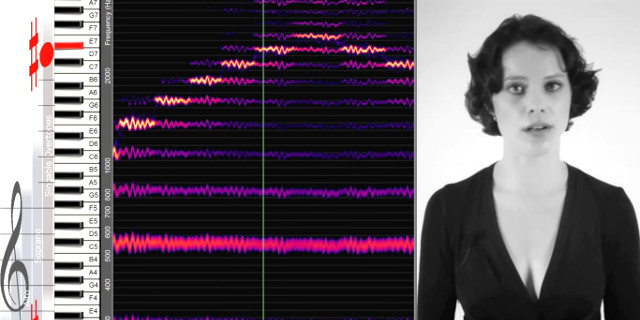

POLYPHONIC OVERTONE SINGING PROFESSIONAL
It was interesting to test it out in real life but I think I’ll leave it to the professional singers from here on out. Hefele’s performance is an example of polyphonic overtone singing, a technique which allows her to produce two distinct notes in perfect harmony.The lower of the two is generated by the vibrations of vocal folds in the larynx: the same process as occurs in everyday speech. I couldn’t hold a specific overtone consistently but I was able to produce a noticeable amplification of the 1087Hz (C#) harmonic. The second white line from the bottom is the fundamental tone I sang at 118Hz (A#). I will spare you and not post an audio sample. But I created a recording of me trying to do it and analyzed the spectrogram. Doing this rhythmically and with great practice, a scale or melody can be created by changing the resonant frequency of the mouth in patterns. An overtone singer manipulates the shape and volume of their resonant cavities to create a resonant frequency of 1664Hz, causing the G# to be amplified above all the other harmonics. On her website, Hefele says this style is originally from Mongolia, locally known as Sygyt. 'Overtone singing is a voice technique where one person sings two notes at the same time,' explains Hefele in the video above. The G# at 1664Hz is the 5th harmonic is a pleasing sound to combine with the fundamental at 277Hz. When you watch German musician Anna-Maria Hefele demonstrate a few polyphonic overtone singing techniques, you will get chills. The basic idea is that the singer uses their tongue, mouth, and throat to change the size and shape of their resonant cavities to change the resonant frequency that will be amplified when sung. So, there’s a lot of uses of the word resonance. Resonant frequency: the frequency that will be amplified due to the perfect resonance of the resonant cavities Resonance: when the resonant cavities cause sound to oscillate with greater amplitude at certain frequencies Resonant cavities: the parts of the body involved in creating the human voice (mouth, larynx, pharynx)

First, I’m going to define some terms to make the following explanation a little less confusing. This requires extremely tight control over the shape of the mouth and is much more difficult to perform. As you can see by the disjointed white line that is higher up, the overtone that is amplified stays the same while the lower white line, the fundamental, is changed.

Pictured here is a spectrogram of a more advanced overtone singing technique. In reality, however, the secondary note was already being sung but it was selectively amplified. By increasing the volume of one overtone at a time, it creates the illusion of singing two notes at once.

As you can see, this singer is performing a scale with the overtones while still singing the fundamental tone at 277Hz. White color in this spectrogram indicates higher volume. Here is an example of a spectrogram of a singer who is manipulating their vocal cavities to perform overtone singing. When one is singing normally, all the overtones are present but they are quiet and blend together to create the sound that we are familiar with when a person is singing. All the other red lines above the fundamental are the overtones. The lowermost red line is the fundamental (the note we hear loudest and perceive as the only note being sung). Sonata armonico: Andante, Adagio, Allegro – voice and harpsichord or pianoĪlas! – voice and bass instrument (bassoon, bass clarinet, cello, etc.In a nutshell, overtone singing is accomplished by using the shape of the mouth and throat to manipulate the volume of a specific overtone or harmonic.Ībove is a spectrogram reading of a short recording of a human voice singing a sustained note around 277Hz (there is also an embedded copy of the sound recording to play). Published by Traumzeit-Verlag.īOOK 3: The Overtone Singing Virtuoso: 12 pieces for polyphonic overtone singing with commentary and instruction.īOOK: Group Singing with Overtones: Features a sequence of instructional/learning objectives for overtone singing with numerous musical activities and 20 compositions correlated to the objectives, starting with beginnersĬowboy Cantata – two overtone singers and country ensemble The text is given in both German and English, and the songs are presented in keys for both women and men. Includes recordings of all the songs by the author. Includes recordings of all the songs by the author.īOOK 2: An Overtone Experience: 15 Songs for Polyphonic Overtone Singing: 14 songs for polyphonic overtone singing with exercises and commentary. BOOK 1: Making Music with Overtone Singing: 14 songs for overtone singing with steady fundamental, with lessons for beginners on bringing out overtones and exercises for skill development.


 0 kommentar(er)
0 kommentar(er)
